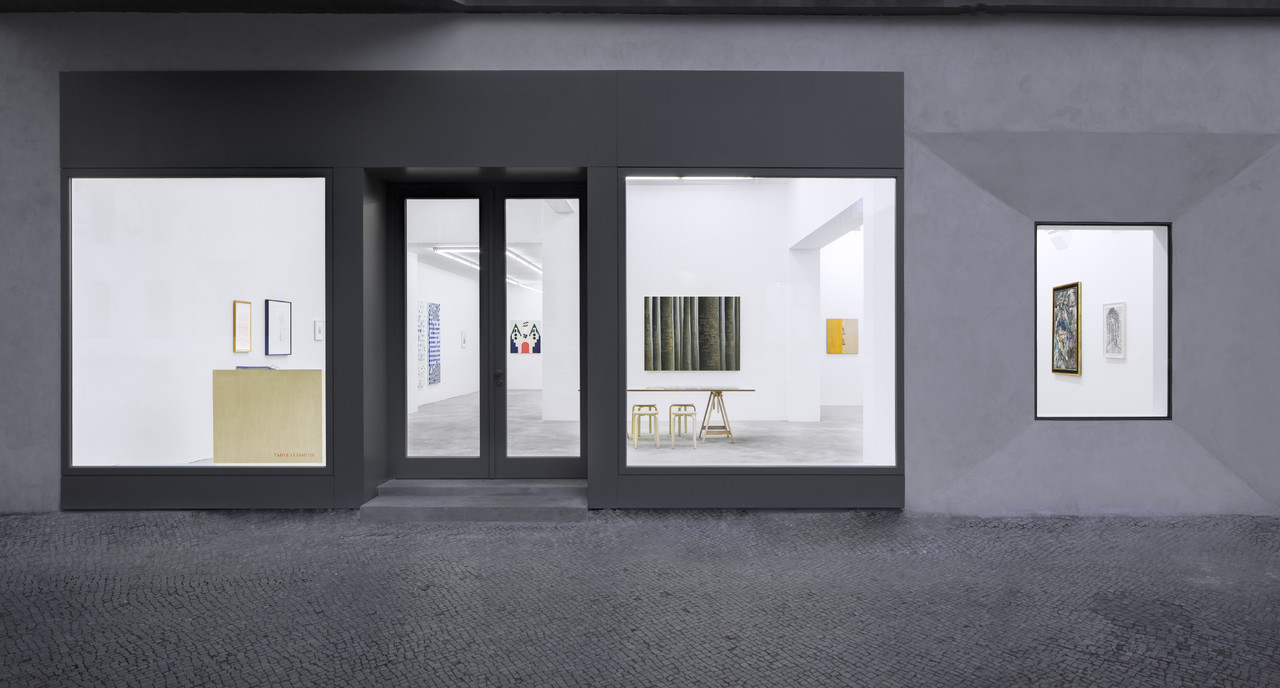What has praise and fame to do with poetry? ...
Was not poetry a secret transaction, a voice answering a voice?
So that all this chatter and praise and blame and meeting people who admired one and meeting people who did not admire one was as ill suited as could be to the thing itself—a voice answering a voice.
–Virginia Woolf, ‘Orlando: A Biography’, 1928
Tanya Leighton, Berlin and Los Angeles is pleased to announce ‘A voice answering a voice’, an exhibition featuring works by Marcus Brutus, Clyde Conwell, Denzil Forrester, Stefanie Heinze, Matthew Krishanu, Joy Labinjo, Misheck Masamvu, Manuel Mathieu, Han Shen, and Zhibo Wang. Gesturing toward the exhibition as a dialogue between two cities, the show title is inspired by the eponymous heroine of Virginia Woolf’s ‘Orlando’, a novel about a semi-immortal, man-turned-woman poet who embarks on a three-hundred-year quest for love, recognition, and fortune, all of which are frustrated due to the enduring patriarchy under which she lives.
Unsurprisingly, critics read ‘Orlando’ as a queer, feminist polemic on the human pursuit of meaning and desire, which for Woolf’s poet, given her near-immortality, should be achievable but is always out of reach. ‘Orlando’ is in essence about the drive to transgress the constraints imposed on the body. In turn, ‘A voice answering a voice’ highlights artists who take up the figurative line and with it explore subject formation and its transgression. Despite their diversity, each artist shares an interest in locating the line at which figuration becomes legible and legibility becomes constraint.
Legibility, here, should be understood along many dimensions—with some focusing more explicitly on identity than others. For example, Marcus Brutus’s paintings reconstruct scenes of everyday life, collaged from Afro-Caribbean visual culture, in a manner that dislocates his subjects from a specific sense of time and place. In Joy Labinjo’s work, the complexity of the Black community also takes centre stage to contemplate the multiplicity of identities her subjects occupy in order to challenge Blackness as a monolithic category. A similar consideration underpins Matthew Krishanu’s practice, which meditates on nationality and race to dwell on the artist’s upbringing as a biracial child growing up in Dhaka–his father English and his mother Bengali Indian.
For other artists, legibility takes a more formal investigation, such as Denzil Forrester, whose long interest in the kinetic energy of dancehalls transforms bodies into rhythmic masses in a manner reminiscent of Futurism’s interest in dynamism. Following suit, Han Shen’s work pursues the connection between body movement and the instincts that guide the painter’s process to explore the relationship between somatic experience and creativity. Carrying the above conversation forward is Stefanie Heinze’s abstract compositions, which she describes as mental and bodily experiences that can display a kind of otherworldliness that renders the banal strange.
Legibility can also take on a political frame, particularly when it comes to how a given political community comes to see itself as such. Manuel Mathieu’s work, for instance, draws from the collective trauma of political violence still felt within the Haitian diaspora to visually capture the sense of fracture that remains for many who survived the country’s dictatorships. Likewise, Misheck Masamvu’s paintings document life in post-independence Zimbabwe through abstract works that aim to convey the experience of oppression through affect alone.
Lastly, legibility can refer to the primordial moment when the human subject becomes legible to itself, namely the instance in which the ‘I’ that anchors “the self” is suddenly an object among other objects. In pursuit of this moment is Zhibo Wang’s votive painting; her work wrestles with longstanding questions about the dialectic between corporeality and spirituality. And for their part, Clyde Conwell’s work contemplates the space of painting itself as the original first screen onto which the self is reflected, making painting a kind of prosthesis for the body whilst using symbols instead of words to title each work.
Referring back to Woolf’s recalling of poetry as an instrument of dialogue with both oneself and a certain audience, the artists in the exhibition all make use of painting’s capacity to amount to personal languages through which the painter can firstly (and ultimately) answer their own questions and preoccupations—a poetic form of parley for self-exploration. Legible to their audiences or not, each of these vernaculars suggests painting as a way to construct or de-construct the self, or challenge, decode, and perhaps even extend it through intimate forms of conversation—a voice answering a voice.
